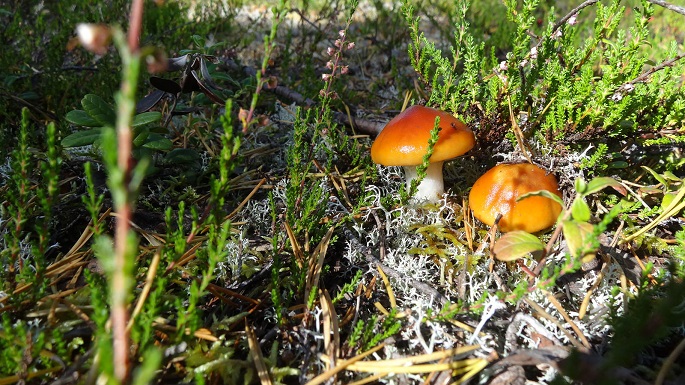Mushroom season begins in Lapland
Published : 31 May 2018, 20:00
Updated : 31 May 2018, 20:32
As soon as snow starts to melt properly in Finnish Lapland, the first mushrooms begin to sprout in Lapland.
False morel (Gyromitra esculenta) is lethal when eaten raw; however, it is harmless and very delicious if cooked properly, especially in soups.
Piritta Marttila from Lapland Mushroom Association advises the mushroom-pickers to follow the following instructions of Evira, the Finnish Food Safety Authority: “False morel fungi should be boiled twice in plenty of water (1 part fungus to 3 parts water) for at least five minutes and rinsed after each boiling in copious amounts of water.” This water has to be then poured out and not used for cooking. When boiling the mushroom, good ventilation needs to be provided to avoid fume poisoning.
How does one distinguish a false morel from a true one? “There are differences in shape and structure at least,” said Marttila. It has a wrinkly hollow cap which most of the times hangs freely from the stem. If you cut open the false morel, you will usually find it filled with cotton-like tissue. A true morel, on the other hand, is hollow inside. “My best advice is to learn thoroughly any mushroom you are going to pick and use. Only take it if you are completely sure and all details match the description of a given species,” concluded Marttila.
The mushroom-picking season in Finland usually lasts from April to early October. But It might last until December if there is no snow. However, the best picking opportunities start in late July. Finland’s forests provide pickers with a great variety of delicious mushrooms. Cep (Boletus edulis) is being one of the examples. This is a very popular species widely used to prepare soups, casseroles, pies and creams. In some countries cep is prized as highly as truffles.
Chantarelle (Cantharellus cibarius) is another popular mushroom that grows in Finland. Its bright yellow colour is difficult not to notice on the forest floor. Chantarelles grow in groups in the exact same spot through the years. They are also used for making soups, sauces, or just frying.
Pine mushroom, (or Japanese matsutake) is yet another delicacy that Finnish forests offer. It is highly valued among Japanese consumers as it gives the dishes an exquisite strong aroma. The mushroom usually grows on the roots of trees in Finland and other countries. It truly is a rare delicacy, as, according to Marttila, “The season of matsutake is short and unpredictable. It’s only approximately every fourth year that matsutake grows a generous amount of fruit bodies.” Japan imports matsutake every year as the demand for the mushroom is very high. It is considered a true seasonal treat and that is why the price of a kilogram of matsutake may reach up to several hundred euros.


